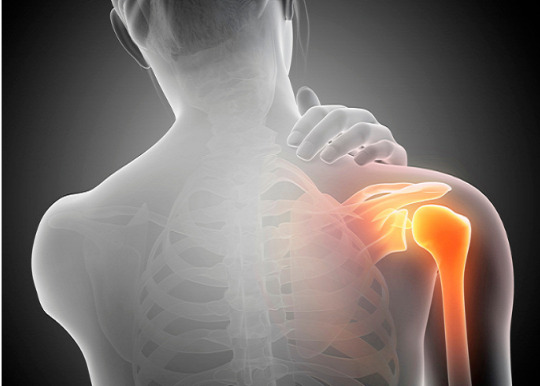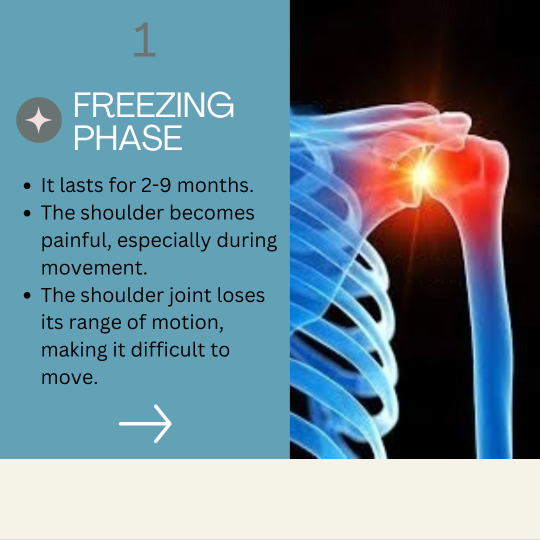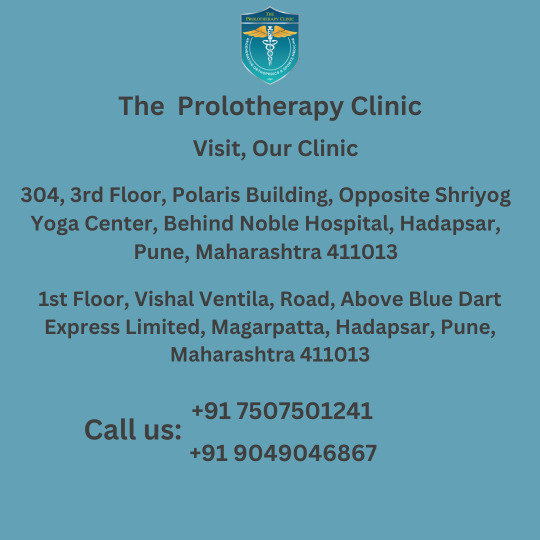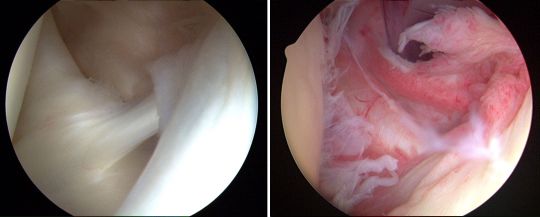#frozenshoulder
Link
How to Sleep With Shoulder Pain: Unlocking the Night’s Secret
#frozenshoulder#howtofixshoulderpain#howtosleepbetter#howtosleepbetterwithshoulderpain#howtosleepinfrozenshoulder#howtosleepinshoulderpain#howtosleeptoavoidshoulderpain#shoulderpain
0 notes
Text

#Visit WohlPhysio & Get Relief from your Pain !!! 📷 Panampilly Nagar : 9895884415 📷 Palarivattom : 7356048007 📷#Homephysiotherapy#frozenshoulder#frozenshouldertreatment
0 notes
Text
Frequently asked questions about non-surgical shoulder injury treatments

Non-Surgical Treatment Options for Shoulder Injuries: Explore the growing field of non-surgical treatments for shoulder injuries, including physical therapy, regenerative medicine, and innovative rehabilitation methods.
Shoulder injuries are a common and often debilitating problem that can affect individuals of all ages. These injuries can result from various causes, including sports, accidents, or repetitive motion. Traditionally, surgical interventions were the primary means of addressing severe shoulder injuries. However, as medical science advances, non-surgical treatment options have become increasingly popular. In this article, we will delve into the world of non-surgical treatments for shoulder injuries, exploring physical therapy, regenerative medicine, and innovative rehabilitation methods.
Understanding Shoulder Injuries
Before we delve into non-surgical treatments, it's essential to understand the types of shoulder injuries that individuals commonly face. Rotator cuff tears, frozen shoulder, and tendinitis are just a few examples of the painful conditions that can hamper daily life. These injuries can result in pain, reduced range of motion, and a significant decline in the quality of life.
Traditional Surgical Treatments
While surgical options exist for severe shoulder injuries, they come with inherent risks and prolonged recovery times. Additionally, not all individuals are suitable candidates for surgery. This has led to the exploration of non-surgical alternatives, which we will discuss in detail.
Non-Surgical Alternatives
The world of non-surgical treatments offers a ray of hope for individuals suffering from shoulder injuries. These alternatives are less invasive, involve shorter recovery periods, and can be highly effective in promoting healing and alleviating pain. Let's take a closer look at some of the most prominent non-surgical options.
Physical Therapy for Shoulder Injuries
Physical therapy is a cornerstone of non-surgical shoulder injury treatment. It involves a range of exercises and techniques that help improve strength, flexibility, and mobility in the shoulder. Patients can expect a personalized treatment plan and close guidance from trained therapists throughout their journey.
The benefits of physical therapy include:
Improved range of motion
Strengthening of the shoulder muscles
Pain relief
Avoidance of surgery
Regenerative Medicine:-
Regenerative medicine is another non-surgical approach gaining traction. It utilizes cutting-edge treatments such as stem cell therapy and platelet-rich plasma (PRP) to promote tissue repair and regeneration. These therapies harness the body's natural healing mechanisms to accelerate recovery.
Regenerative medicine offers:-
A minimally invasive procedure
Reduced downtime
Enhanced healing potential
Innovative Rehabilitation Methods:-
Innovative rehabilitation methods represent the future of non-surgical treatment for shoulder injuries. These approaches incorporate advanced techniques, such as neuromuscular re-education and proprioceptive training. They aim to restore function and mobility to the shoulder through a holistic approach.
Patients have reported success with these methods, citing:
Faster recovery
Greater comfort during rehabilitation
Lower risk of complications
Advantages of Non-Surgical Treatments:-
Non-surgical treatments offer several key advantages. They are minimally invasive, meaning patients experience less trauma to the body. Recovery is typically faster, allowing individuals to return to their daily routines sooner. Furthermore, the risk of complications associated with surgery is significantly reduced.
Case Studies:-
To showcase the effectiveness of non-surgical treatments, we have collected a series of case studies. These real-life examples highlight individuals who opted for non-surgical alternatives and achieved remarkable recoveries. We'll also compare these cases to traditional surgical outcomes.
Choosing the Right Treatment:-
Choosing between surgical and non-surgical options is a crucial decision. It's essential to consider factors like the severity of the injury, individual health conditions, and personal preferences. Consulting with a healthcare professional is the best way to make an informed choice.
Preparing for Non-Surgical Treatment;-
Patients considering non-surgical treatment should prepare themselves mentally and physically. Setting realistic expectations and understanding the treatment process are essential for a positive outcome.
Success Stories:-
Hear from individuals who have experienced the transformative power of non-surgical treatments. Their testimonials and personal anecdotes will inspire those seeking relief from shoulder injuries.
The Future of Non-Surgical Treatments:-
The field of non-surgical treatments for shoulder injuries is continuously evolving. Ongoing research and advancements offer hope for further breakthroughs in the near future. Stay tuned for what the medical community has in store.
Conclusion:-
Non-surgical treatments have opened a new chapter in the management of shoulder injuries. These methods offer hope to those who wish to avoid surgery and its associated risks. Exploring non-surgical treatments is a prudent choice for anyone facing shoulder injury challenges.
#shoulderinjuries#frozenshoulder#doctor#medical#treatment#pune#surgon#Maharashtra#Dr.PrashantParate#India
0 notes
Text
Understanding Frozen Shoulder
Suffering from a "frozen shoulder" means enduring a painful stiffness that renders your shoulder almost immovable. Commonly arising in middle age, it particularly targets women and those with certain health conditions like diabetes. It unfolds in three stages—starting with the 'freezing' of movement accompanied by growing pain, followed by the 'frozen' phase where the shoulder feels persistently stiff. Eventually, the 'thawing' phase brings a slow return of movement and easing of pain, a process that can take several years.
Diagnosis typically involves ruling out other conditions via X-ray, then confirming with more detailed scans. Treatment ranges from steroid injections and tailored exercises in the early stages to procedures like hydrodilatation or even surgery for more immediate relief. Navigating a frozen shoulder demands patience and a methodical approach to treatment, but with the right care, a full recovery and return to normal function is achievable.
Know More Explore our comprehensive resources for managing and overcoming a frozen shoulder
https://londonorthopaedicclinicngp.com/what-is-a-frozen-shoulder/

0 notes
Text

Discover relief from the chill of Frozen Shoulder ❄️ at Malhotra Hospital & Orthopaedic Centre! If you're dealing with shoulder stiffness and pain, our expert team is here to help. Visit us at our Panchkula, Haryana location for top-notch care. Don't let shoulder discomfort hold you back - book your appointment now!
📍 302, Sector 7, Panchkula, Haryana
📞 +91-7302217302, 0172-596286
🌐 http://malhotrahospitalandorthopaedic.com/
Regain your shoulder mobility today!
0 notes
Text
Super Easy! Clever Ways to Beat Frozen Shoulder~
Today, I'm here to teach you some "clever tricks" to overcome frozen shoulder!
Circle Movements:
Move your shoulder in circular motions - up and down, left and right, and forward and backward. Alternate between clockwise and counterclockwise circles. Do this every one to two hours, at least 20 times each session. Remember, make the circular motions slow and deep.
Wall Climbing:
Imagine yourself as a long-armed primate and raise your arms higher and higher against a wall until you feel pain preventing further upward movement. Try to do this every day, aiming to gradually relieve shoulder pain.
Shoulder Shrugs:
This movement works wonders. Begin by shrugging your left shoulder (raising it towards your ear), then your right shoulder. Alternate between left and right, doing at least 20 shrugs each time.
Self Back Rub:
Give yourself a back rub in the bathroom. Use your unaffected arm to reach behind and touch the lower back while your affected arm reaches down from the upper back. If your arms can't reach each other, use a towel to connect them.
Hair Combing:
Focus on combing your hair. Alternate between hands, moving from your forehead, over the top of your head, around the back, and down near your ears. Each time, do this at least 20 times.
You can also try a hugging motion: Stand with your feet shoulder-width apart, cross your arms tightly behind your head, then open your elbows out to the sides parallel to your body. Bring your elbows close together, resembling a head clamp. Repeat this at least 20 times, alternating sides.
Come on, start practicing these exercises now! If your frozen shoulder isn't getting better, leave a message for me!
1 note
·
View note
Text





Do you know that a Frozen Shoulder can be a painful and frustrating experience? ❄️
Here's a quick guide to understanding the Three Phases of a Frozen Shoulder! Swipe through our post to learn more about each phase and the three key points that will help you identify and manage it. 💪🏻💪🏻
Visit: www.theprolotherapyclinic.com
Follow us for more updates...
#frozenshouldertherapy#FrozenShoulder#phasesoffrozenshoulder#prolotherapytreatment#ShoulderHealth#PhysicalTherapy#Rehabilitation
1 note
·
View note
Link
0 notes
Text
Frozen shoulder
Frozen shoulder, likewise called cement capsulitis, is a condition that causes agony and firmness in the shoulder. After some time, one may think that it’s very difficult to move the shoulder. In any case, more often than not patients see that after a time of declining manifestations, the solidified shoulder will in general show signs of improvement, albeit full recuperation may take up to a couple of months. Exercise-based recuperation, which spotlights on improving shoulder portability, is the essential treatment suggestion. Frozen shoulder most regularly influences individuals between the ages of 40 and 60, and happens in ladies more frequently than men. Also, individuals with diabetes are at an expanded danger of building up a solidified shoulder.
Anatomy
Your shoulder is organized like a ball-and-attachment. It is comprised of three bones: your upper arm bone (humerus), your shoulder bone (scapula), and your collarbone (clavicle).The humerus bone (ball) into a shallow attachment (glenoid) in your shoulder bone. The bones are held together by a Strong connective tissue, called the shoulder case, encompasses the joint. The container is typically flexible, permitting, boundaries of development in the shoulder. A grease called synovial liquid helps facilitate the developments.

#frozenshoulder#backpain#shoulderpain#neckpain#kneepain#physiotherapy#sciatica#tenniselbow#osteoarthritis#pain#lowbackpain#fitness#physicaltherapy#arthritis#physio#rehab#painrelief#osteoporosis#chiropractic#painmanagement#headache#sportsinjury#shoulder#elbowpain#bonesetting#scoliosis#frozenshouldertreatment#wristpain#sakitpinggang#d
0 notes
Link
How to Sleep With Shoulder Pain: Unlocking the Night’s Secret
#frozenshoulder#howtofixshoulderpain#howtosleepbetter#howtosleepbetterwithshoulderpain#howtosleepinfrozenshoulder#howtosleepinshoulderpain#howtosleeptoavoidshoulderpain#shoulderpain
0 notes
Photo

"From frozen to flexible shoulder, physiotherapy can make it happen." #shoulderworkout #shoulderpain #frozen #frozenshoulder #treatment #treatyoubetter #physio #physiotherapy #physicaltherapist #physiotherapistinlucknow #lucknowdiaries #lucknowtimes #lucknow #lucknowdoctors (at Fasana Kabir Physiotherapy) https://www.instagram.com/p/CnBRTTDJwIE/?igshid=NGJjMDIxMWI=
#shoulderworkout#shoulderpain#frozen#frozenshoulder#treatment#treatyoubetter#physio#physiotherapy#physicaltherapist#physiotherapistinlucknow#lucknowdiaries#lucknowtimes#lucknow#lucknowdoctors
1 note
·
View note
Text

POSISI TIDUR INI TERNYATA BISA MEMBANTU PROSES PENYEMBUHAN PENYAKIT !
Mengapa kita perlu mengetahui cara tidur dengan baik?
Karena kurang lebih kita menghabiskan sepertiga hidup kita untuk tidur
Ketika kita tidur tubuh meregenerasi sel dalam tubuh kita dan tubuh kita reposisi segala sesuatu yang ada di tubuh kita
Sebenar nya mau posisi nya seperti apa aja sama sama baik, karena tubuh kita secara bawah sadar ketika tidur mencari posisi terbaik untuk regenerasi sel dalam tubuh kita
Tapi ada satu hal yang perlu di perhatikan…
Yaitu alas tempat kita tidur…
Alas tempat kita tidur harus lah matras busa press
Meskipun penyebab dari rentetan masalah tidur berbeda pada setiap orang, nyeri dari cedera bisa menyebabkan tidur tidak tenang, sehingga menimbulkan tekanan pada punggung dan masalah persendian, dan biasanya akan membuat anda cenderung merasa lelah dan semakin letih matras busa press setidaknya dapat mengurangi nyeri yang berkaitan dengan punggung dan persendian anda.
Banyak sekali pasien kita yang proses penyembuhan nya semakin cepat dengan adanya matras..
Saya sendiri salah satu nya
Sakit pinggang dan punggung karena jatuh sudah 3 hari tersiksa rasanya
Untung nya Saya langsung di terapi di medical hacking
Begitu satu kali terapi sakit saya hilang hingga 80%
Sudah tidak kerasa sakit lagi, walau kalau di pegang sakit rasa nya
Pada malam hari nya saya mencoba tidur di matras sesuai arahan tim medical hacking
Ajaib nya, besok pagi pinggang dan punggung saya 100% tidak sakit lagi
Tidur saya jauh lebih nyeyak, padahal sebelum nya suka kebangun di tengah malam
Kualitas tidur pun jadi lebih berkualitas, benar benar terasa segar ketika bangun tidur
Mulai perbaiki kesehatan teman teman dengan mengganti tempat tidur teman teman yaa
Jika artikel ini bermanfaat untuk umat manusia silahkan share artikel ini kepada sanak family dan sahabat di group wa anda
Oh ya kita juga ada group konsultasi kesehatan secara gratis dengan para spesialis kami dengan klik link di bawah ini:
-> https://bit.ly/groupwakesehatan
Salam sehat,
Sehat Anda bahagia kami
#hnp #sarafkejepit #cervical #lumbar #torakal #sakitpinggang #sakitpunggung #sakitleher #nyeripinggang #encok #lututsakit #punggusakit #medicalhacking #pundaksakit #sakitkepala #frozenshoulder #sakitbahu #sakitlengan #sakitsaraf #pinggang #leher #pundak #syarafkejepit #syarafterjepit #syaraf #syarafkejetit
#hnp#sarafkejepit#cervical#lumbar#torakal#sakitpinggang#sakitpunggung#sakitleher#nyeripinggang#encok#lututsakit#punggusakit#medicalhacking#pundaksakit#sakitkepala#frozenshoulder#sakitbahu#sakitlengan#sakitsaraf#pinggang#leher#pundak#syarafkejepit#syarafterjepit#syaraf#syarafkejetit
0 notes
Text
How do I know if I injured my rotator cuff?
Rotator cuff tear is a very common injury in the young as well as the elderly. It can present with shoulder pain and difficulty in shoulder movements. After appropriate diagnosis, exercises and rehabilitation can help in complete recovery. However, in certain cases, surgery needs to be done to achieve the best result.
Website - https://ashutoshhospital.com/
Facebook - https://www.facebook.com/ashutoshospital
Instagram – https://www.instagram.com/ashutosh.hospital
YouTube – https://www.youtube.com/ashutoshHospital
Linkedin - https://www.linkedin.com/company/ashutosh-hospital/
#rotatorcuffexercises#rotatorcufftear#rotatorcuff#rotatorcuffinjury#shoulderpain#frozenshoulder#shoulderpainexercises#shoulderinjury#shoulderinjuryrecovery#arthroscopy#shouldersurgery#drkunalshah#drajayshah#ashutoshhospital#vadodara
0 notes
Text
#morningyoga#shoulderworkout#shoulderneck#frozenshoulder#hunchback#yoga#bedtimeyoga#stretch#shape#slimbelly#stovepipe
1 note
·
View note
Photo

Healingwithsree My Esteemed client came to me just to lead a more holistic life. He didnt have any expectations and he said I am actually OK where I am right now. Physically he had issues like FROZEN SHOULDERS, INDIGESTION,HEADACHES But he had no idea these could be resolved too and we started our journey. In just 3 sessions he started feeling transformed. Now his frozen shoulders has higher mobility and he says now almost 90% back. Headaches which was very normal for him he hasn't had a single episode so far inspite of a very stressful time at work. And No indigestion too. www.healingwithsree.com #hypnotherapy #hypnotherapist #hypnosis #frozenshoulder #INDIGESTION #headache #headacheattack https://www.instagram.com/p/ChJIPvBBBSX/?igshid=NGJjMDIxMWI=
0 notes
Text

Shoulder Care Specialists | Dr.Elie Ayoub | Finest Chiropractor in Dubai
Ever wondered what the nagging pain in the shoulder is? Identify the actual cause of it from the expert and get relief in just 30 minutes.
Stop suffering... Book your appointment now!!!
Symptoms of chronic shoulder pain include damaged rotor cuff, bone spurs, arthritis in the shoulder joint, dislocation, and frozen shoulder.
Long-term relief from chronic shoulder pain begins here! The best way to relieve pain from your shoulder muscles is through chiropractic adjustments. The skilled practitioner, Dr. Elie Ayoub, with 21+ years of experience in treating shoulder pain, can relieve it in three ways:
Cryotherapy
Shoulder adjustment
Myofascial release
Joint manipulation
Massage therapy
Follow @dr.elie.ayoub on Instagram for daily pain relief and mobility tips!
For appointments and consultation
Click the link: https://chiropracticdubai.com/book-your-appointment-with-elie-ayoub/
Call or WhatsApp on # +971 58 548 1951
#shoulderpain#frozenshoulder#shoulderbladepain#leftshoulderpain#rightshoulderpain#frozenshouldertreatment#shoulderpainrelief#shoulderinjuries#shoulderjointpain#shouldermusclepain#backshoulderpain#topofshoulderpain#shoulderpaintreatment#shoulderpainwithoutinjury#shoulderblademuscles#backtohealthchiropractic#chiropractic#chiropractor#chiro#drelieayoub#drelieayoubdubai#abudhabi#dubai#sharjah#ajman#ummalquwain#rasalkhaimah#fujairah#bestchiropractor#dreliechiropractor
0 notes